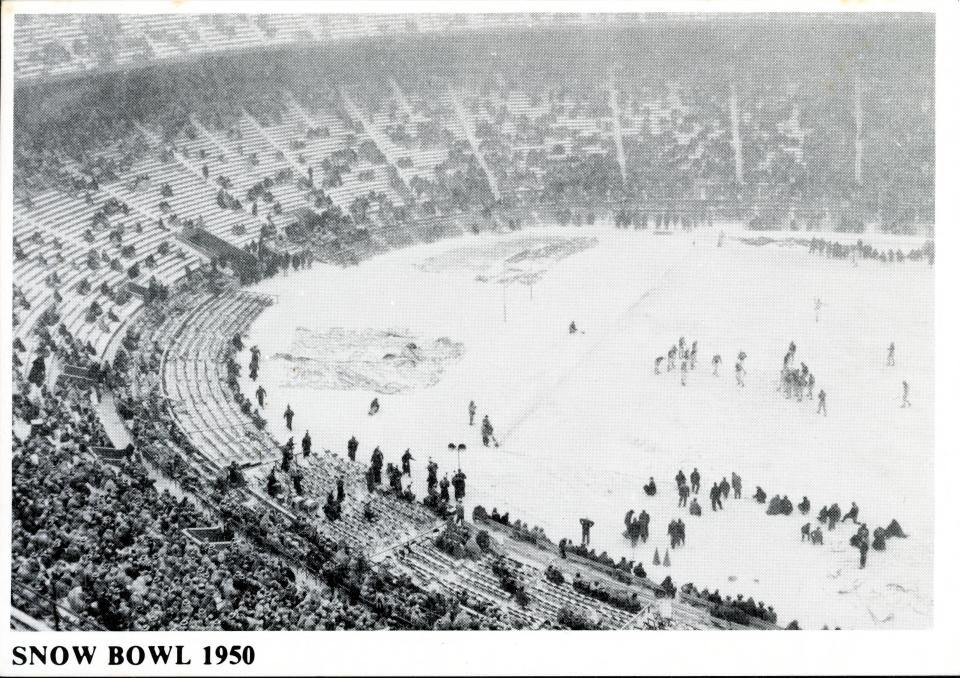Be thankful we are not facing the Great Thanksgiving Blizzard of 1950 | Theodore Decker

We watched the snow pile up in Buffalo, N.Y., last week in awe and disbelief.
That much snow? In November?
Madness. Hard to imagine.
But not impossible. In Ohio, there was the Great Thanksgiving Snowstorm of 1950.
It should be acknowledged upfront that lake-effect snow of the kind that pummeled western New York is a different animal than even the biggest snowstorms dished up here in central Ohio, the Blizzard of 1978 included.
Parts of western New York last week were buried under more than six feet of snow in a few days, with snow falling at the rate of three inches or more per hour.
The 1950 Thanksgiving Blizzard, as it also is known, dropped about a foot of snow across most of Ohio. The eastern half of the Buckeye State saw considerably more, though, on the order of 20 to 35 inches.
While those snow totals were far lower than the recent New York storm, the 1950 storm was no stroll through a winter wonderland.
"The legacy of a storm can be judged by how long it is remembered, and very few storms are remembered for a half a century or more," Kent State University geography professor Thomas Schmidlin told Dispatch columnist John Switzer back in 2000, on the 50th anniversary of the storm. "The Thanksgiving storm of 1950 was certainly one of them."
The snowstorm brought roaring winds to 60 mph, frigid temperatures and even a few parallels to the recent snowfall in Buffalo, from two-story-tall drifts to a high-profile debate about the feasibility of playing some football.
More:What's next for Ohio State football? An early glance at the Michigan Wolverines
More on that in a bit.

The 1950 blizzard came on the heels of an unusually warm October; Nov. 1 of that year reached 80 degrees, according to reports of the time.
By Thanksgiving, the weather had turned decidedly to winter. It was snowing by Friday, but on Saturday the storm blew up, building to an intensity that surprised even the forecasters. The barometer sank to 978mb, a reading typically reserved for hurricanes. By storm's end, 55 deaths in Ohio were blamed on the blizzard.
"The worst storm conditions occurred on Saturday (Nov. 25) ... as near-blizzard conditions prevailed throughout Ohio," Schmidlin told Switzer. "Steubenville reported 22 inches on Saturday, and drifts were reaching 25 feet in the upper Ohio Valley."
In central Ohio, those conditions meant it was time for some football.

 Yahoo Autos
Yahoo Autos 